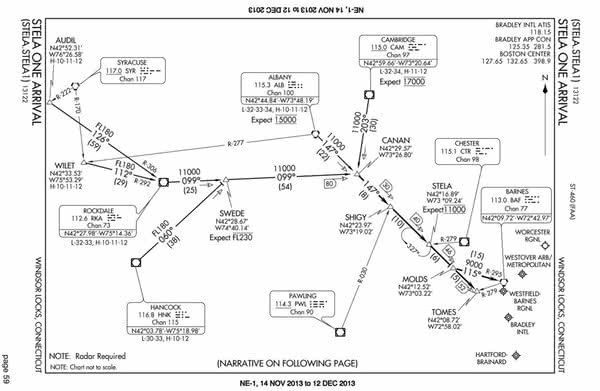What altitude to fly on a STAR when it reads “expect”?
I just took the instrument knowledge test and one of the questions referred to this STAR. I got this question right, but for the wrong reason.
The question stated that you were cleared for the STELA ONE arrival from the west and asked what altitude you should be at when crossing STELA. My understanding of a clearance for a STAR was that, unless otherwise instructed, you should use both the lateral and vertical guidance on the chart. So at STELA, you should be at 11000′. The notation for expect isn’t applicable unless you were told to fly at a higher altitude when given your clearance. Even then, you wouldn’t descend to 11000′ until instructed.
However, I was mistaken. Unlike departure procedures and approach procedures, a STAR only provides lateral and airspeed guidance unless an alitude is specified with underlines or overlines.
AIM 5−4−1. Standard Terminal Arrival (STAR) Procedures
a. A STAR is an ATC coded IFR arrival route established for application to arriving IFR aircraft destined for certain airports. STARs simplify clearance delivery procedures, and also facilitate transition between en route and instrument approach procedures.
1. STAR procedures may have mandatory speeds and/or crossing altitudes published. Other STARs may have planning information depicted to inform pilots what clearances or restrictions to “expect.” “Expect” altitudes/speeds are not considered STAR procedures crossing restrictions unless verbally issued by ATC. Published speed restrictions are independent of altitude restrictions and are mandatory unless modified by ATC. Pilots should plan to cross waypoints with a published speed restriction, at the published speed, and should not exceed this speed past the associated waypoint unless authorized by ATC or a published note to do so.
NOTE−
The “expect” altitudes/speeds are published so that pilots may have the information for planning purposes. These altitudes/speeds must not be used in the event of lost communications unless ATC has specifically advised the pilot to expect these altitudes/speeds as part of a further clearance.
Pilots navigating on STAR procedures must maintain last assigned altitude until receiving authorization to descend so as to comply with all published/issued restrictions. This authorization may contain the phraseology “DESCEND VIA.” If vectored or cleared to deviate off of a STAR, pilots must consider the STAR canceled, unless the controller adds “expect to resume STAR;” pilots should then be prepared to rejoin the STAR at a subsequent fix or procedure leg. If a descent clearance has been received that included a crossing restriction, pilots should expect the controller to issue an altitude to maintain.
(a) Clearance to “descend via” authorizes pilots to:
(1) Descend at pilot’s discretion to meet published restrictions and laterally navigate on a STAR.
(2) When cleared to a waypoint depicted on a STAR, to descend from a previously assigned altitude at pilot’s discretion to the altitude depicted at that waypoint.
(3) Once established on the depicted arrival, to descend and to meet all published or assigned altitude and/or speed restrictions.
In the case of the exam question, the instruction did not include the phrase “Descend via” and so the altitude to cross STELA would be whatever altitude the pilot was last cleared to, which to the best of my recollection, was not one of the answers.
Good explanation on Bold Method.



